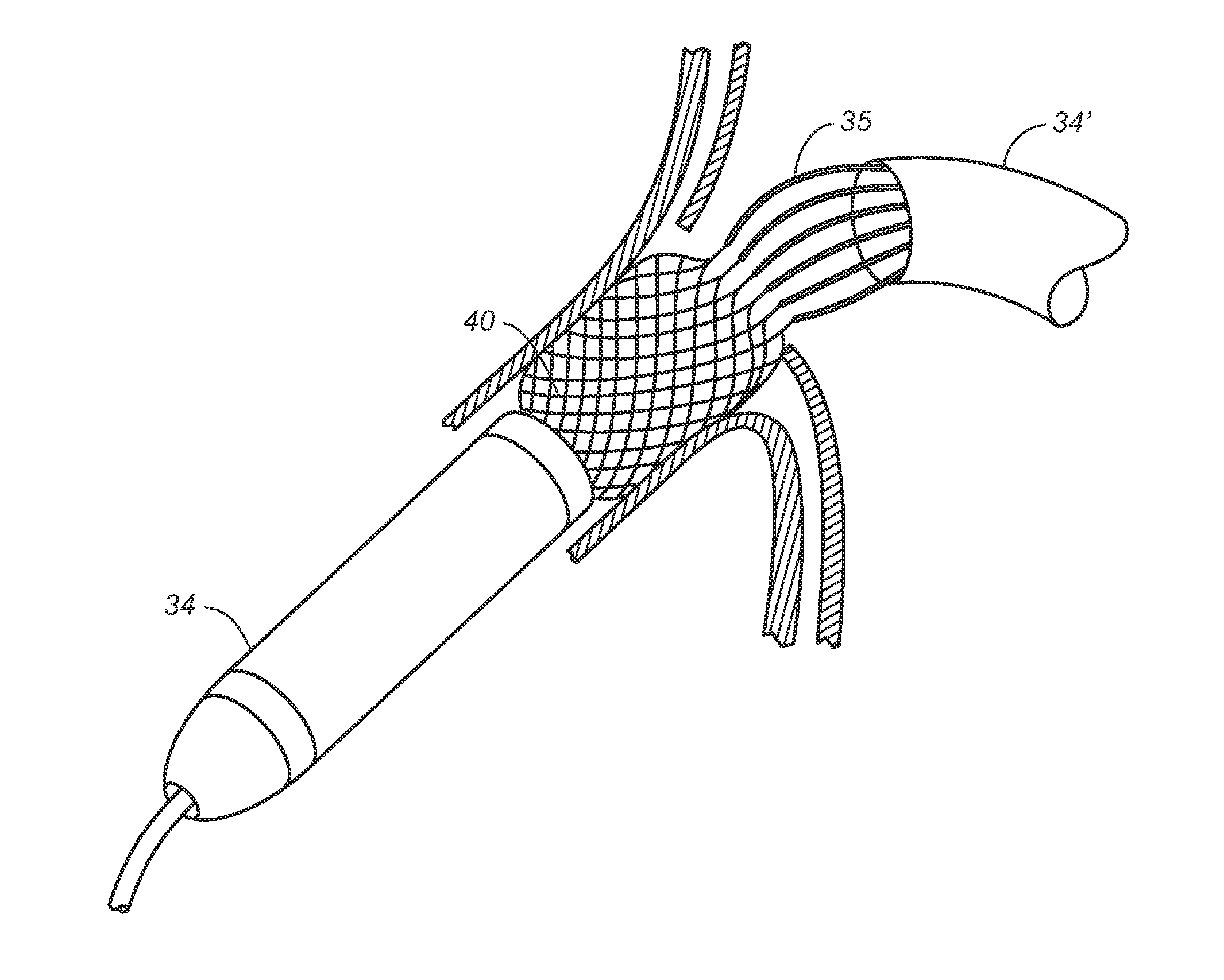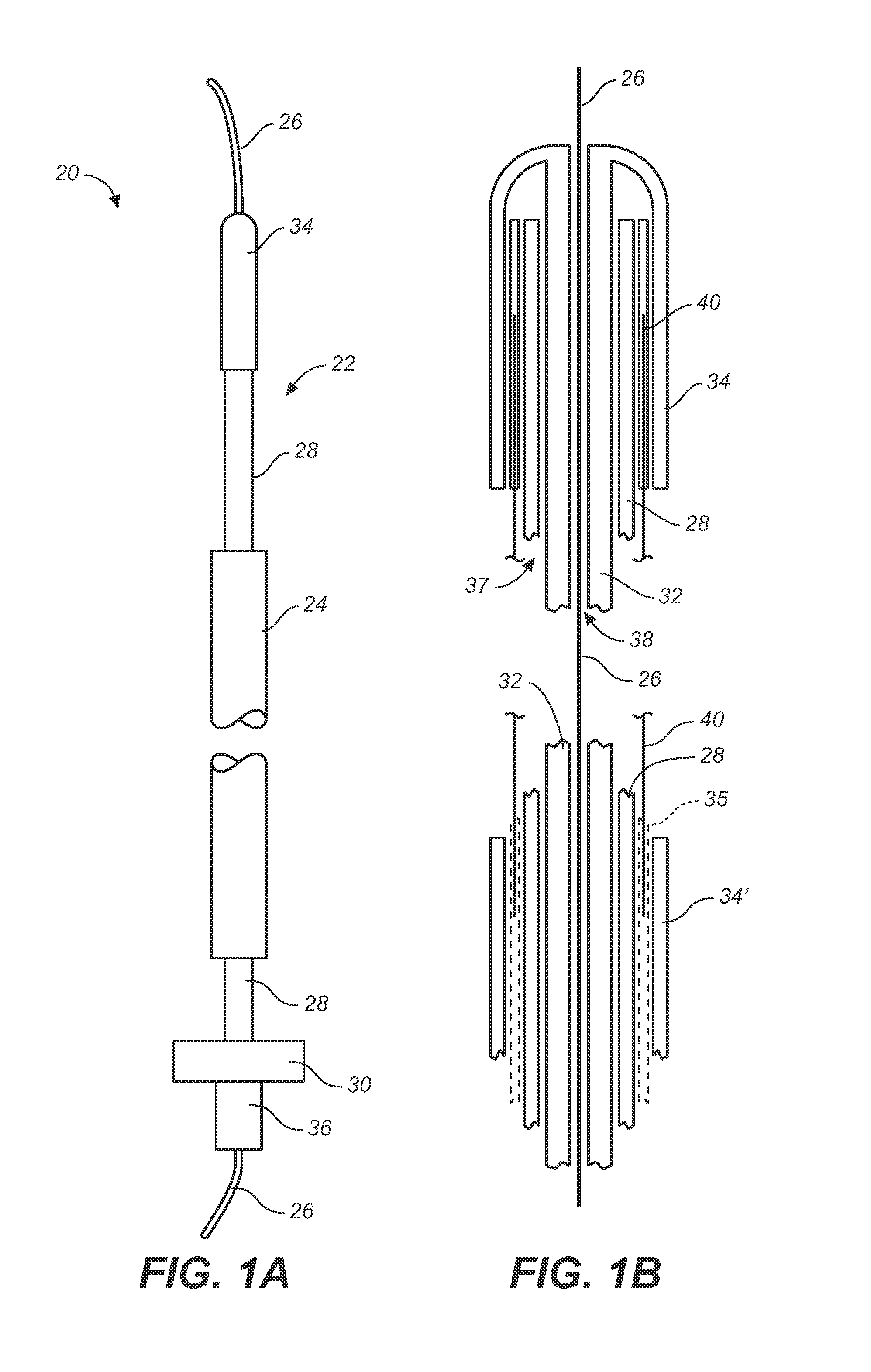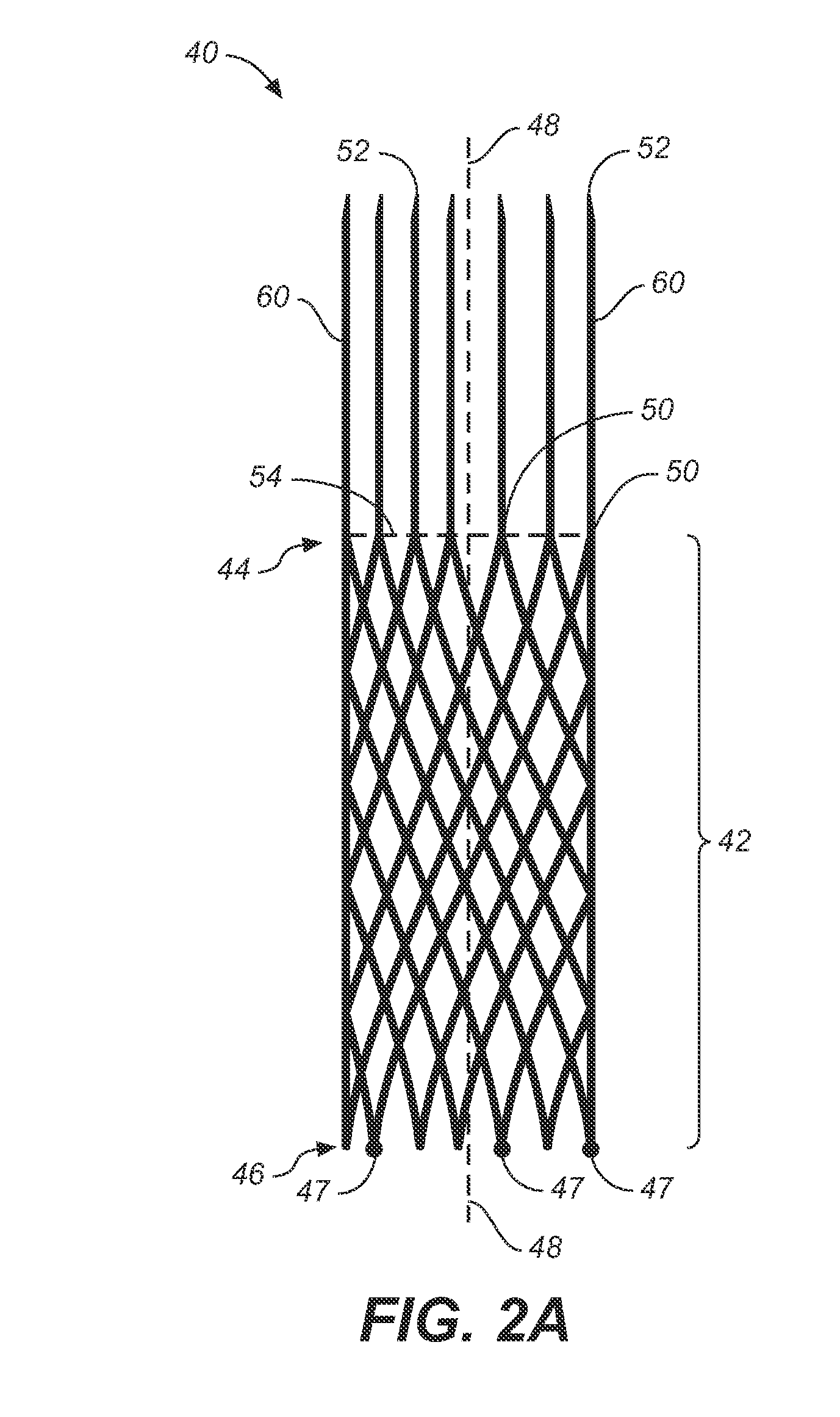Branch Vessel Suture Stent System and Method
a stent and clamping technology, applied in the field of clamping vessel suture stent system and method, can solve the problems of long recovery time, complex surgical procedure, and long hospital stay
- Summary
- Abstract
- Description
- Claims
- Application Information
AI Technical Summary
Benefits of technology
Problems solved by technology
Method used
Image
Examples
Embodiment Construction
[0026]FIGS. 1A-1B are side and close up cross sectional views, respectively, of a branch vessel suture stent system. The branch vessel suture stent system 20 includes a suture stent delivery catheter 22 for delivering and deploying a branch vessel suture stent 40, a steerable catheter 24, and a guidewire 26. The suture stent delivery catheter 22 includes an outer shaft 28, an inner shaft 32, and a sheath (distal sheath 34 and proximal sheath 34′). The distal sheath 34 restrains the branch vessel suture stent 40 in a compressed (stressed) state until the branch vessel suture stent 40 is in position for deployment. When the proximal sheath 34′ is moved proximally to expose the hypotubes containing the hooks, the positioning of the proximal end of the suture stent 40 can be verified. Then the distal sheath 34 is moved distally to release the body of the branch vessel suture stent 40 to allow it to relax toward its parent state. The suture stent is prevented from moving forward with the...
PUM
 Login to View More
Login to View More Abstract
Description
Claims
Application Information
 Login to View More
Login to View More - R&D
- Intellectual Property
- Life Sciences
- Materials
- Tech Scout
- Unparalleled Data Quality
- Higher Quality Content
- 60% Fewer Hallucinations
Browse by: Latest US Patents, China's latest patents, Technical Efficacy Thesaurus, Application Domain, Technology Topic, Popular Technical Reports.
© 2025 PatSnap. All rights reserved.Legal|Privacy policy|Modern Slavery Act Transparency Statement|Sitemap|About US| Contact US: help@patsnap.com



